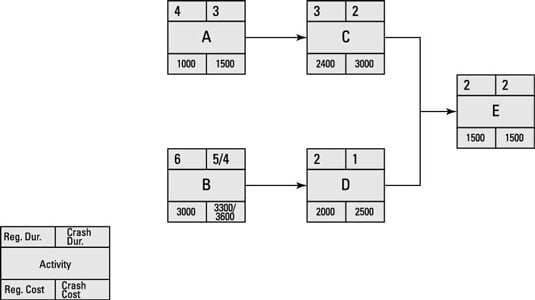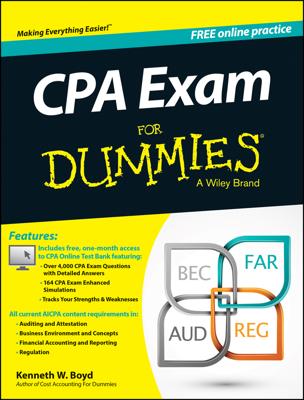As you go through a project for PMP Certification Exam purposes, you will probably need to find ways to compress some parts of the schedule because other parts took longer than expected. The two main types of schedule compression are crashing and fast-tracking.
Crashing
Crashing looks for cost/schedule trade-offs. In other words, you’re looking for ways to shorten the schedule by applying more resources or by spending more. The intent is to get the most schedule compression for the least amount of money. Some common ways of accomplishing this include
Bringing in more resources
Working overtime
Paying to expedite deliverables
You want to crash only those activities on the critical path because that’s the path that drives the duration of the project. Here is an example of how you would evaluate crashing activities on the critical path.
Assume you have a network path with five activities on it: Activity A, Activity B, and so on. The durations and the predecessor information in Table 3-2 have been given to you, and you can assume this information is accurate.
| Task | Duration | Predecessor |
|---|---|---|
| A | 4 | None |
| B | 6 | None |
| C | 3 | A |
| D | 1 | B |
| E | 2 | C, D |
You also have the following information about the costs to crash each activity.
Task A costs $1,000.
Task E costs $1,500.
Task B is three times as expensive as Task A.
Task C costs $2,400.
Task D costs twice as much as Task A.
To crash Task A and save 1 day, it will cost 50% more. It cannot be crashed more than 1 day.
To crash Task B, it will cost $300 more per day, and it can be crashed up to 2 days.
Task C can be crashed by 1 day for a cost of $600.
Task D can be crashed by 1 day for a cost of $500.
Task E cannot be crashed.
If you think about it, you can probably figure out how to solve this on your own. Still, here’s a six-step method to solve this kind of problem:
Create a table that shows the regular duration and crash duration, and the regular cost and crash cost for each activity. Then include a column that shows the crash cost per day.
Task Regular
DurationCrash
DurationRegular
CostCrash
CostCost
Per DayA 4 3 1,000 1,500 500 B 6 5/4 3,000 3,300/3,600 300 C 3 2 2,400 3,000 600 D 2 1 2,000 2,500 500 E 2 2 1,500 n/a n/a By looking at the table, you can see that the least-expensive activity to crash is Activity B, and you can crash that by either 1 day or 2 days.
Draw a network diagram that corresponds to the network information you were given.

Fill in the regular and crash durations and the regular and crash costs.

Add the durations for each path and determine the critical path.
The critical path in this example is BDE, with a duration of 10 days.
Start by crashing the least-expensive activity on the critical path until you have a new critical path.
In this example, you can crash Activity B for $300 for 1 day. Then both paths are 9 days.
Continue this process until you reach the duration you need, or until you can’t crash anymore.
For this example, you can crash the network down to 7 days for a total additional cost of $2,200.
The summary of this example is that the regular duration is 10 days, and the regular cost is $9,900. The fully crashed duration is 7 days, and the cost is $12,100.
You might see this type of question in the Planning section or the Control section. In both instances, you’re looking to gain the most amount of time for the least amount of cost.
Fast-tracking
Fast-tracking shortens the schedule by overlapping activities that are normally done in sequence. One way of doing this is by changing the network logic adjusting your leads and lags and changing a finish-to-start (FS) activity to an FS with a lead or to a start-to-start (SS) with a lag.
Fast-tracking can increase your risk on the project and may necessitate rework. Make sure you understand the real relationship between activities when you fast-track!

